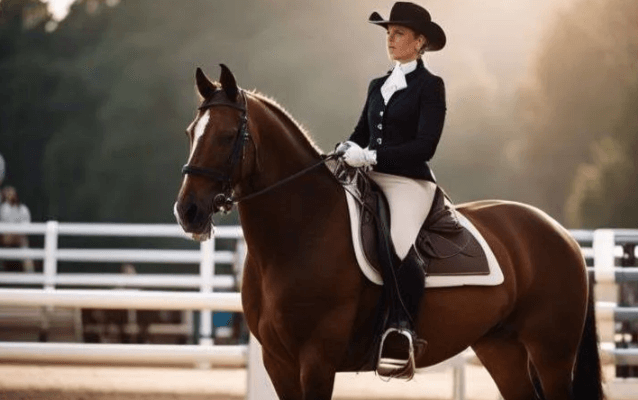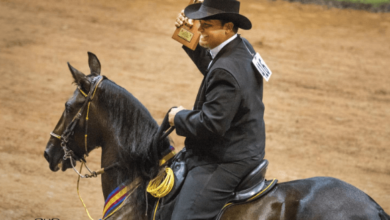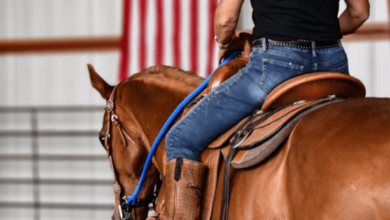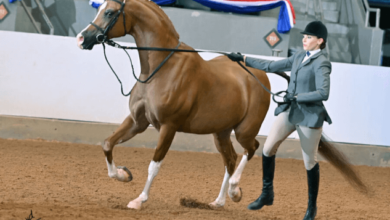How Can Western Pleasure Skills Be Improved?

Western pleasure riding is an equestrian discipline that emphasizes smooth, controlled movements and a relaxed, willing horse. It’s a highly popular class in many horse shows, particularly in Western performance events. Success in Western pleasure is measured by the horse’s ability to exhibit a calm and responsive demeanor, combined with polished, fluid gaits. To achieve success, riders and horses need to develop a wide range of skills and characteristics, from technical riding abilities to enhancing the horse’s natural movement. Below, we delve into how Western pleasure skills can be improved to stand out in the ring.
Understanding the Fundamentals of Western Pleasure
Improving Western pleasure skills begins with understanding the fundamentals. Western pleasure is primarily judged on three gaits—the walk, jog, and lope. These gaits should appear effortless and demonstrate that the horse is comfortable and responsive to the rider’s cues. A significant part of excelling in this discipline involves refining both the rider’s technique and the horse’s performance. The connection between the two is what creates a standout performance.
- The Walk: The horse should maintain a four-beat gait, staying relaxed and controlled without rushing. A good walk shows rhythm and a forward-moving horse that appears alert yet calm.
- The Jog: A jog is a two-beat gait, slower than a trot, where the horse should maintain cadence and fluidity. It must be collected and smooth, appearing effortless for both horse and rider.
- The Lope: The lope, a three-beat gait, is one of the most challenging aspects of Western pleasure. It should be balanced and slow without losing rhythm. The rider needs to help the horse maintain a collected, controlled lope, avoiding any rough transitions or choppy movement.
Improving Communication and Cues
Clear, consistent communication between horse and rider is essential for improving Western pleasure skills. Horses respond to subtle cues, and in Western pleasure, those cues need to be nearly invisible to an onlooker. This degree of subtlety only comes through constant practice and a deep understanding of the horse’s movement.
- Use of Legs and Hands: A rider’s hands and legs are their primary tools for communicating with the horse. Developing soft hands ensures that the rider doesn’t pull too hard on the reins, while effective leg cues help maintain the horse’s pace and direction. Practice using as light a touch as possible to guide the horse.
- Body Position: Riders must maintain a balanced, centered position throughout the ride. When riders shift their weight improperly or become stiff, it disrupts the horse’s balance and rhythm. Practicing proper posture, with the shoulders back and a steady seat, enhances control over the horse’s movements.
- Timing of Cues: Well-timed cues are crucial in maintaining the desired gait and transitions. Riders should work on feeling the horse’s movement to apply cues at the right moment, ensuring smooth transitions between gaits.
Developing Consistent Gaits
Consistency is key in Western pleasure, and riders must aim to achieve smooth, controlled gaits that appear effortless. Riders can improve their horse’s consistency by working on the following:
- Transitions: Moving between the walk, jog, and lope without disrupting the horse’s rhythm takes practice. Riders should aim for seamless transitions, paying attention to the horse’s balance and responsiveness during these changes.
- Cadence: Horses should maintain a steady cadence at each gait. Riders can improve cadence by working on collection and teaching the horse to move from its hindquarters. A collected horse is easier to control and keeps a consistent pace.
- Self-Carriage: A well-trained horse in Western pleasure should maintain self-carriage, meaning it holds its own frame without needing constant correction from the rider. Teaching a horse self-carriage involves a lot of groundwork and rider patience. Lateral exercises and circles help strengthen the horse’s back and improve its ability to carry itself.
Building Trust and Relaxation
Western pleasure horses are judged on their demeanor as well as their gaits, meaning the horse needs to appear relaxed and happy. Building trust between horse and rider is crucial to achieving this. Trust encourages a calm, willing partnership, which is reflected in the ring.
- Groundwork: Spending time with the horse outside of the saddle through groundwork helps build trust. Horses need to learn to follow the rider’s lead calmly and without fear. Longeing, liberty work, and desensitization exercises are great for improving communication and building a relaxed partnership.
- Trail Riding and Exposure: Horses that are well-traveled tend to stay calmer in stressful show environments. Trail riding provides exposure to various stimuli and teaches the horse to handle unexpected situations with composure. A horse that is accustomed to new environments will be less reactive and more relaxed in the show ring.
Focus on Horse Conditioning
A well-conditioned horse performs better in Western pleasure events. Conditioning helps improve the horse’s stamina, flexibility, and strength, all of which contribute to better gaits and transitions.
- Strengthening Exercises: Exercises that build the horse’s hindquarters and topline are particularly beneficial for Western pleasure. Hill work, poles, and lateral exercises all help develop the muscles needed for collection and consistent gaits.
- Stretching and Flexibility: Incorporating stretches into the horse’s routine can help improve flexibility, which in turn contributes to smoother, more fluid movement. Exercises like serpentines and leg-yields are great for increasing flexibility.
- Endurance Training: Although Western pleasure horses perform slower gaits, they still need good endurance. Longer rides at a controlled pace can build the stamina necessary to maintain composure and strength during long show sessions.
Tack and Equipment Considerations
The right tack and equipment can significantly impact performance in Western pleasure. Riders should use gear that enhances communication and helps the horse perform at its best.
- Saddle Fit: A well-fitted saddle allows for better movement and comfort for the horse. Riders should regularly check saddle fit, as an ill-fitting saddle can restrict the horse’s movement and lead to discomfort, negatively affecting performance.
- Bits and Reins: The bit is an important tool for communication. In Western pleasure, a mild bit is typically used, and riders should aim for softness in their hands. Too much pressure from the reins can cause the horse to resist, while a light hand encourages the horse to relax into the bit.
- Show Attire: While show attire is not directly related to improving riding skills, looking the part can help build confidence. Riders should invest in proper attire that fits the Western pleasure class’s aesthetic standards, including a well-maintained saddle, bridle, and appropriate rider clothing.
Consistent Training and Patience
Improving in Western pleasure requires time, dedication, and consistency. Riders should develop a structured training plan that includes a mix of groundwork, riding exercises, and show preparation.
- Daily Practice: Daily rides focusing on maintaining smooth transitions, consistency, and responsiveness are key. Riders can break down their training sessions into smaller, focused segments to avoid overwhelming the horse and to target specific areas that need improvement.
- Professional Guidance: Working with a skilled Western pleasure trainer can accelerate progress. A trainer provides an experienced eye, helping riders fine-tune their techniques and identifying areas where improvement is needed. Regular lessons offer feedback that’s critical for ongoing development.
- Patience and Positive Reinforcement: Improvement in Western pleasure takes time, and both the horse and rider need to be patient. Encouraging positive behaviors with praise and rewards keeps the horse motivated and willing. Frustration should be avoided, as it can negatively impact the horse’s performance and attitude.
Mental Preparation for Both Horse and Rider
Mental preparation is just as important as physical readiness in Western pleasure. Horses can sense their rider’s emotions, and nervousness or tension can translate into a poor performance in the ring.
- Relaxation Techniques: Riders can benefit from relaxation techniques such as deep breathing or visualization before a show. Remaining calm and focused helps create a harmonious connection with the horse.
- Familiarizing the Horse with Show Environments: Before a competition, taking the horse to the showgrounds for schooling sessions can help reduce anxiety. The more familiar the horse is with its surroundings, the more relaxed and focused it will be during the actual performance.
- Developing Confidence: Both horse and rider need to be confident in their abilities. Confidence comes with experience, practice, and preparation. As riders continue to improve their skills and bond with their horse, they will naturally build more confidence, leading to better show performances.
Conclusion
Improving Western pleasure skills requires a combination of technical riding proficiency, effective communication, and a strong partnership with the horse. By focusing on clear cues, developing consistent gaits, building trust, and ensuring proper conditioning, riders can significantly enhance their performance in the show ring. Regular practice, professional guidance, and mental preparation all play essential roles in reaching the highest levels of success in Western pleasure. With patience and dedication, both horse and rider can achieve a polished and harmonious performance that stands out to judges and spectators alike.



